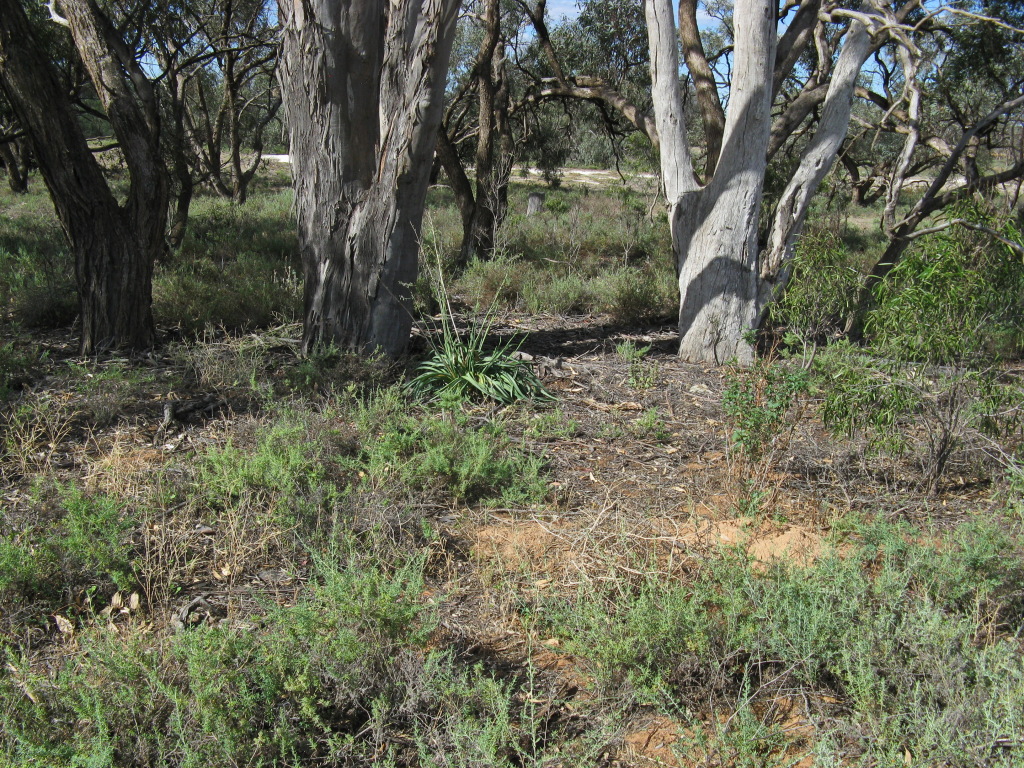Dianella porracea
(R.J.F.Hend.) P.F.Horsfall & G.W.Carr Leek Flax-lilyPlants rather robust, of solitary, or more usually, several tufts connected by short rhizomes, to c. 1.2 m high. Leaves erect-arcuate, not or hardly sheathing at base, 20–50(–80) cm long, 10–25 mm wide, broadly V-shaped in section, rather thick-textured and stiff, distinctly glaucous, concolorous, margins and abaxial midrib smooth or, rarely, minutely and irregularly tuberculate-scabrous. Inflorescence usually narrowly ovoid, c. 15–50 cm long, rather sparse; pedicels recurved, 3–8 mm long; flowers 13–18 mm wide, pale to deep sky blue; perianth segments spreading to slightly recurved, 6–9 mm ling; stamens c. 10–12 mm long, filaments kinked, c. 1.5–2 mm long, filament swellings (strumae) golden yellow, c. 1.5 mm long, anthers pale yellow, c. 4 mm long. Berry ovoid to globular, 3–7 mm long, lumpy, pale to dark blue when ripe; seeds flattened ovoid, black, minutely areolate, 3–4.0 mm long. Flowers reported in Oct.
MuM, Wim, MSB, RobP, MuF, Gold. Also SA, Qld, NSW. Largely confined to the north-west, mostly near the Murray River and rather rare, inhabiting sandy soils and silty alluvium (e.g. Lake Arawak near Hattah, Lake Powell near Robinvale, Wood Wood on the Murray River), with outlying, scattered occurrences in the Quambatook area.
Closely allied to Dianella longifolia and formerly included within that species.
Flowers have been reported as opening around midday.
Conran, J.G. (1994). Liliaceae. In: Walsh, N.G.; Entwisle, T.J., Flora of Victoria Vol. 2, Ferns and Allied Plants, Conifers and Monocotyledons, pp. 637–686. Inkata Press, Melbourne.
 Spinning
Spinning

